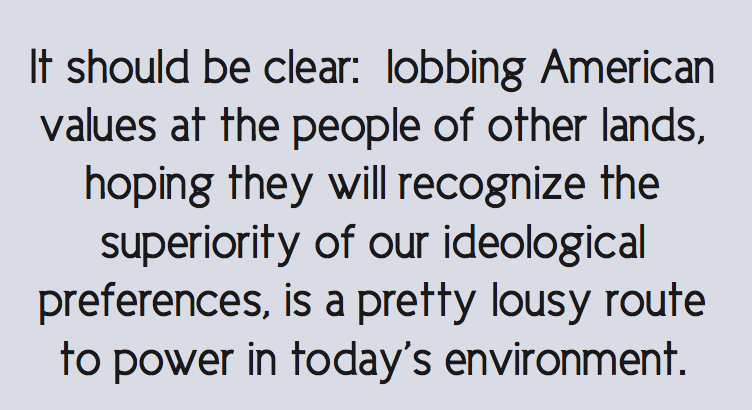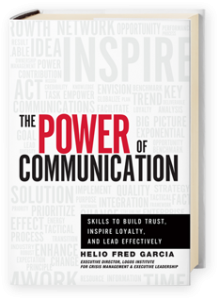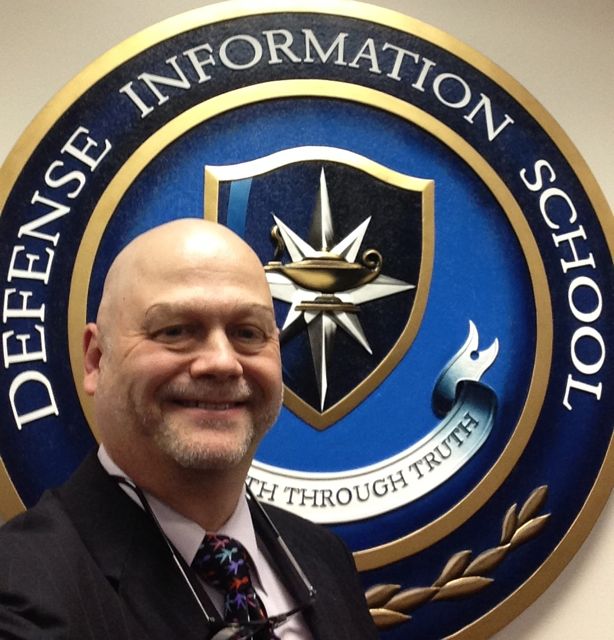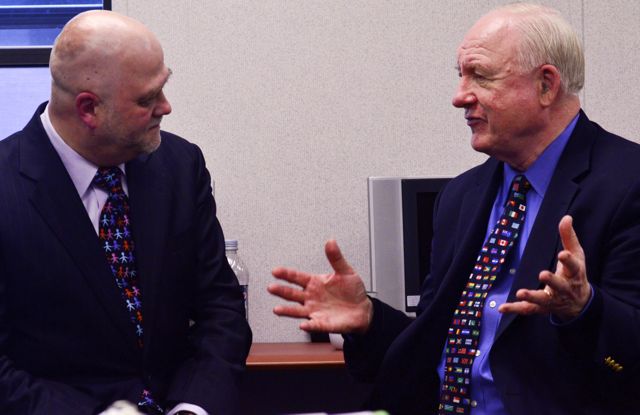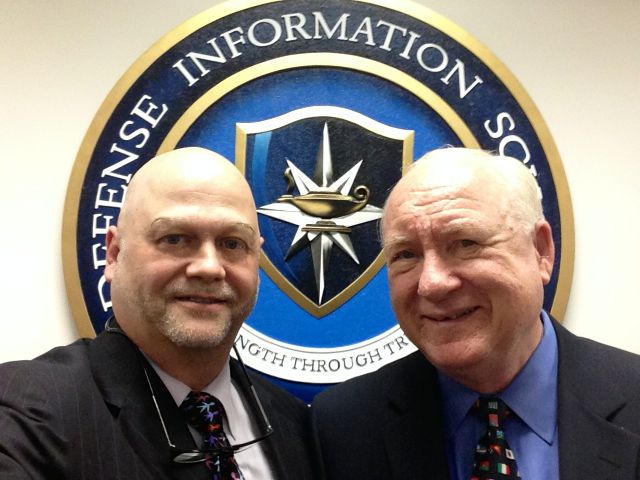| Adam Tiouririne | Bio | Posts 21 Aug 2014 | 10:38AM |
There are few more brightly lit intersections between language and leadership than State of the State season. Each January through March, America’s governors enter the spotlight to tout successes, downplay failures, and set priorities for the year ahead. This is the first of a series of posts leading up to the 2014 elections, using these speeches to analyze which politicians say what and why.
“I’m gearing up to win as many governors races as I can this November.”
That’s a remarkable quote. Not for its depth or insight or shock value, but for its sheer impossibility.
No one can win multiple governors races at once. And the man who said it, Chris Christie, isn’t even on any ballots this November. But the New Jersey governor chairs the Republican Governors Association, where his job is to ensure that his party’s gubernatorial candidates (who actually are on the ballot) win.
Even when Christie’s reference make sense, his word choice is still remarkable. The RGA chair’s counterpart at the Democratic Governors Association, Peter Shumlin of Vermont, is more pluralistic in his bluster: “We’ve got a great story to tell,” he proclaimed in a ranging interview last year, avoiding the Mr. Rogers-esque “I’ve got a great story to tell.”
Sure, Christie has a reputation as a me-first pol. But does the Great Pronoun Divide go deeper than just Christie and Shumlin? Do Republicans and Democrats differ in how they use even the smallest words in their vocabulary? An analysis of governors’ State of the State speeches says yes.
Republican governors say I, me, my, and mine almost 40% more often than Democratic governors do.
This chart plots governors by how often they used “I” words (I, me, my, and mine; on the horizontal axis) and “we” words (we, us, our, and ours; on the vertical axis) in their 2014 State of the State speeches. For example, in Maryland governor Martin O’Malley’s speech, 0.97% of the words were “I” words and 5.94% were “we” words.
You can mouse over the points to explore the data and find your own governor. (Note that seven governors didn’t deliver State of the State speeches in 2014; their legislatures were in recess.) Three things to focus on:
- The pattern: This data tracks theory, polls, and conventional wisdom, which all hold that Democrats are more likely to value collectivism (“we”) and Republicans are more likely to value individualism (“I”). A cluster of seven Democratic governors dominates the upper-left of the chart, using fewer “I” words and more “we” words than their peers. On the other hand, of the eight speeches that used “I” words more than 2% of the time, six were given by Republicans and only two by Democrats — and one of those Democrats, Rhode Island’s Lincoln Chafee, used to be a Republican.
- The lack of a pattern: There’s definitely a difference between how Democratic and Republican governors use “I” words and “we” words. But the difference isn’t so stark as to draw a clear dividing line between blue and red. Congressional voting records, for example, are much more polarized than language is here.
- Specific governors: Some of the extremes offer interesting, if unscientific, windows into governors’ personalities. Colorado’s John Hickenlooper, the scrupulous conciliator, uses “I” words least often; Louisiana’s Bobby Jindal, the policy wonk, uses few personal pronouns at all.
Of course, no political research is complete until it’s been misconstrued for partisan advantage.
These results don’t conclusively show that one party’s governors are better than the other’s. But for those interested in spinning these results to confirm their own positions anyway, enjoy this handy interpretation table:
| You would like to interpret these results as a… | Democratic governors… | Republican governors… |
| Partisan Democrat | Consider their constituents first, before thinking of themselves | Are selfish autocrats who govern without concern for others |
| Partisan Republican | Refuse to take accountability for their jobs, shifting the emphasis to others | Take personal responsibility for the outcomes of their administrations |
| Neutral observer | Tend to use singular first-person pronouns less than Republicans | Tend to use singular first-person pronouns more than Democrats |
Share your thoughts here, like this post on LinkedIn, or tweet @Tiouririne.




